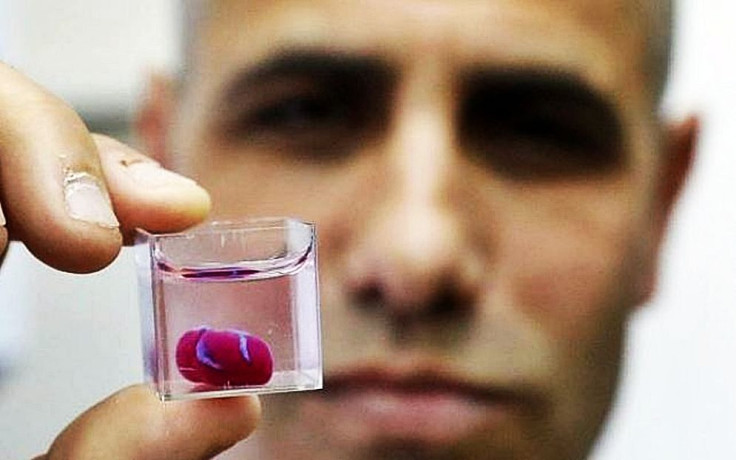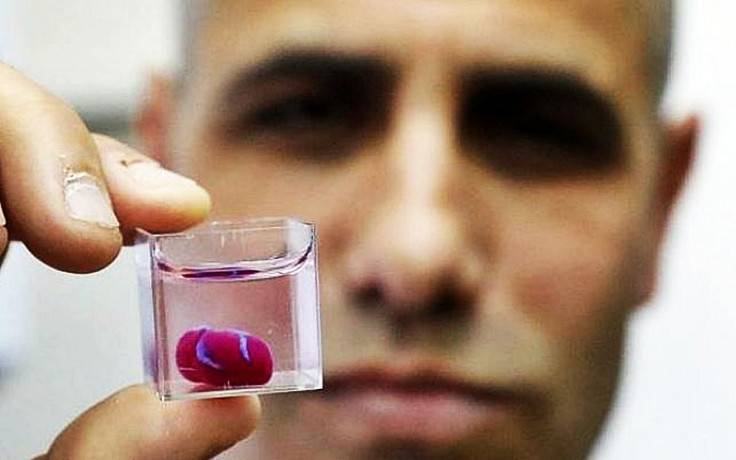Israeli Researchers Successfully 3D Print Human Heart

In what is truly a major medical breakthrough, scientists in Israel have 3D-printed a heart complete with human tissue and vessels using human cells. No one has done this before.
Although this historic heart printed from human tissue is only the size of a rabbit’s heart, the knowledge gained will open the way to one day printing full-sized human hearts. Israeli scientists said the 3D-printed heart advances the possibilities for transplants with little risk of the body rejecting the new hearts.
Developed at Tel Aviv University in Israel, the heart has cells that can contract, but needs to be taught how to pump, said the researchers. The next step will be to transplant 3D-printed hearts into animal models hopefully in about a year.
A far more difficult problem is how to expand the cells to have enough tissue to recreate a human-sized heart, he said.
"This is the first time anyone anywhere has successfully engineered and printed an entire heart replete with cells, blood vessels, ventricles and chambers," Professor Tal Dvir of Tel Aviv University's School of Molecular Cell Biology and Biotechnology said. He is also the senior author of the research published Monday in Advanced Science.
"People have managed to 3D print the structure of a heart in the past, but not with cells or with blood vessels," he said.
Dvir pointed out that at this stage “our 3D heart is small, the size of a rabbit's heart. But larger human hearts require the same technology."
Researchers said the process of 3D printing the heart involved a biopsy of the fatty tissue surrounding abdominal organs. They then separated the cells in the tissue from the rest of the contents (the extracellular matrix linking the cells).
The cells were reprogrammed to become stem cells with the ability to differentiate into heart cells. The matrix was processed into a personalized hydrogel that served as the printing "ink."
A monumental task will be to train the hearts to behave like hearts, according to Dvir.
"The cells need to form a pumping ability; they can currently contract, but we need them to work together."
Researchers plan to transplant the 3D-printed heart in animals, after that, humans.
"Maybe, in 10 years, there will be organ printers in the finest hospitals around the world, and these procedures will be conducted routinely," Dvir noted.




























